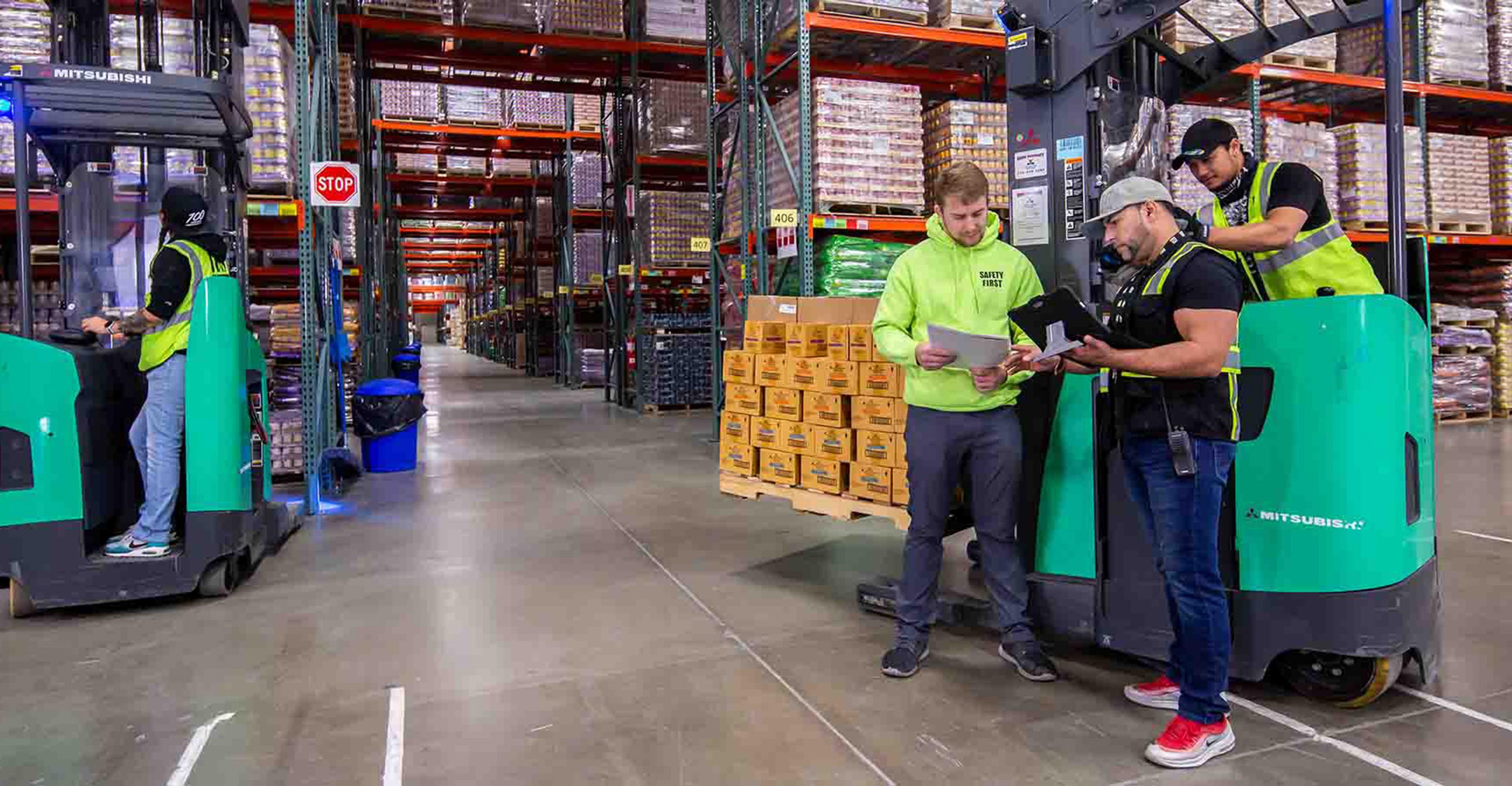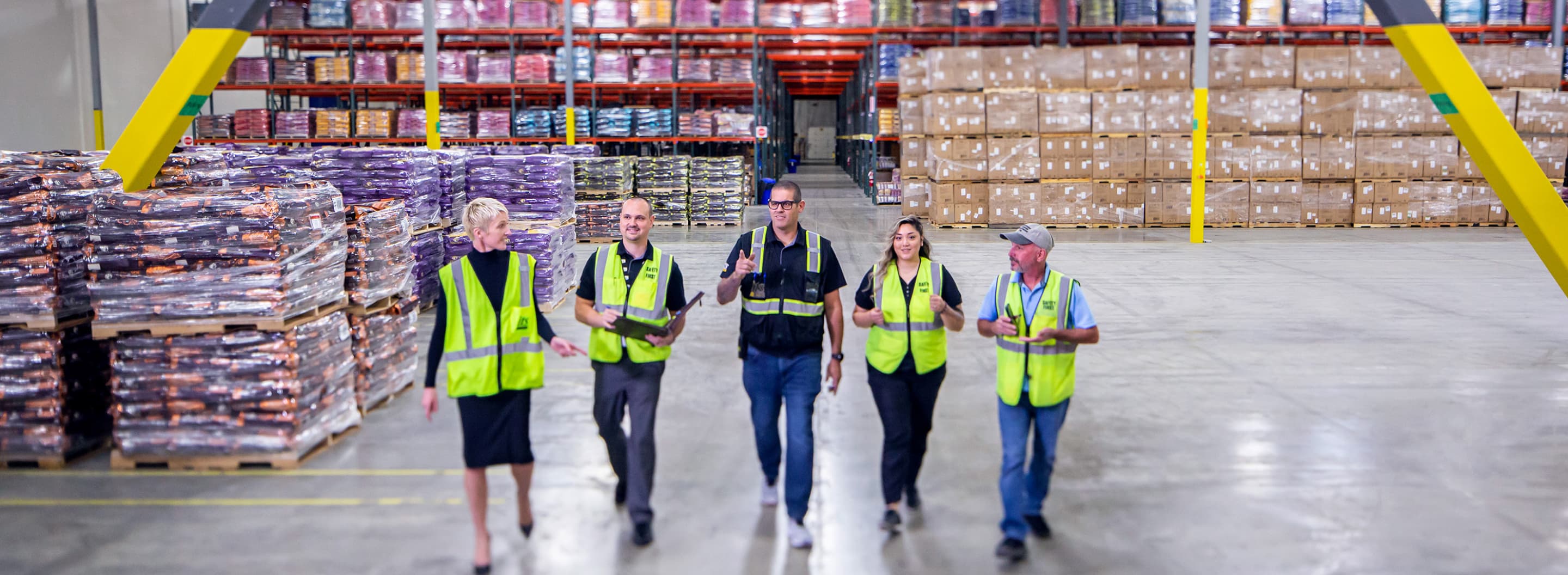Strategic Warehousing Tactics for Increased ROI and Reduced Fulfillment Time

Inventory turnover rates have decreased, customer demand for faster fulfillment has increased, and warehousing faces a multitude of obstacles this year. Looking towards a future where one-day fulfillment is considered the standard, strategic warehousing is more important now than ever.
Strategic warehousing is simple on the surface: developing, implementing, and monitoring a strategic plan for how to handle organizational warehousing needs. However, in creating and implementing the plan, many complexities will need to be addressed to effectively increase ROI and fulfillment speed.
Optimizing a warehouse strategy
Organizations that have already created a warehouse operation plan, can still benefit from optimization, supporting greater levels of efficiency and cost-savings.
- Reevaluate storage and inventory needs.
Inventory turnover levels and capacity remain low across the nation, making warehouse space more challenging to acquire. How much old inventory is currently being stored? What is that costing? If inventory isn’t moving, now is the right time to think about offloading the inventory that is costing, rather than making, you money. - Consider where customers are located.
Proper warehouse location is vital to decrease fulfillment and shipping time. Having multiple warehouses located in hubs near customers can support next-day or two-day fulfillment efforts, increasing customer satisfaction levels. Take note of current customer demographics and determine if the current business strategy fills all needs. If not, look towards expanding the organization’s warehousing footprint or partnering with a 3PL for new warehouse location options. - Examine all aspects of the supply chain.
A warehousing strategy will only go so far. Steamship lines, carriers, and other logistics providers all have a hand in helping transform business goals into reality. Outsourcing to multiple providers, with each taking a single step in the supply chain, prevents overarching visibility into orders, inventory turnover, shipping time, and more. Consider consolidating to one third-party logistics provider that can meet all supply chain needs and provide technology-backed visibility every step of the way. - Plan for the company of tomorrow, not the one that exists today.
All organizations have plans to grow, and getting caught without warehousing options can stop organizational growth in its tracks. Whether warehousing is in-house or outsourced to a logistics partner, the solution needs to be scalable. A third-party provider will be able to create flexible warehousing solutions, scaling up with organizational growth, and supporting overall business needs.
Making a strategic warehousing plan
There are several considerations to keep in mind when generating an initial plan for warehousing needs. Strategic planning will involve location selection, personnel requirements, distribution mapping, sales forecasting, and more.
- Location
Be mindful of customer location. Warehouse operations need to be located close to the customer base to fulfill orders in a timely fashion. Choosing multiple warehouse locations across the nation or globally can help support faster fulfillment times.
Centralized warehouses are traditionally very popular. In this strategy, fewer, larger warehouses are centrally located, supporting cost- and speed-efficient transportation to customers. Warehouse location is a vital piece of improving operational efficiency. If outsourcing distribution and fulfillment activities to a third-party logistics company is part of the plan, be sure their warehouse locations align with organizational needs before moving forward.
Want to reach 95% of the United States population in two days? Our three warehousing locations can help!
- Technology,
Running an efficient warehouse is no easy task, which is why a host of technologies have been built with that specific purpose in mind. Whether warehousing is in-house or outsourced to another provider, be sure the necessary technology for success is in place long before fulfilling orders.
The right Warehouse Management System (WMS) and Inventory Management System can make all the difference in distribution and fulfillment. A good WMS will support business goals and help efficiently move inventory to market by managing warehouse resources such as space, labor, equipment, tasks, and material flow. In many cases, Warehouse Management Systems will be equipped with bar coding and radio frequency data – allowing the system to also support inventory tracking.
Looking to outsource your fulfillment? Ask all necessary technology questions before signing a contract. Ensure the WMS being used will fit your business needs and integrate with any systems already in place. The right partner will be able to provide visibility into inventory turnover, assisting you in efficient inventory planning.
- Picking, Packing, and Kitting
Picking, packing, and kitting all require a high level of customization and a significant amount of manual effort. With the right technology in place, the effort behind picking and packing orders can be reduced – but the most significant hurdle will still be in place: human resources.
The manual labor that goes into picking, packing, and kitting requires the ability to scale the workforce up or down dependent on the number of orders forecasted at any given time. This can be difficult to accomplish depending on the labor market. Outsourcing to a third-party logistics company can ensure that enough people will be available for order fulfillment throughout the year.
- Set up tracking for the right Key Performance Indicators (KPIs).
Creating a new warehousing strategy puts the organization in a unique position to build with tracking and scalability in mind. Both in-house and outsourced warehousing should have set KPIs for benchmarking and reporting. A few key metrics to consider tracking are:- On-time fulfillment
- Damage rates
- Inventory cycle counts
- Dock-to-stock time
Reduce shipment time and increase ROI with the right logistics partner
Looking for a third-party logistics provider that can create flexible warehousing solutions and support business growth? ITS Logistics is here to help. ITS offers creative logistics solutions spanning multiple aspects of the supply chain. For more information on our warehousing services and specialties, click here, or contact us today to talk to one of our experts.
Discover how ITS has helped its customers:
- Caraway Sees 280% Order Volume Increase and Expands into Omnichannel Fulfillment
- Common Challenges, Uncommon Solutions
- ITS Logistics and Starbucks – A Perfect Blend



